Traveling to the Arctic is a true adventure! It’s a land of contrasts – where vast, icy tundra meets endless ocean, and where sunlight dances for months during summer and vanishes into polar night in winter. With unique ecological and cultural significance, the Arctic tells a fascinating tale of resilience, scientific discovery, and global cooperation.
Indigenous communities have called this region home for thousands of years, living in harmony with the harsh environment. Today, scientists work in Arctic research stations year-round, even through the long, frigid winters, to study wildlife and the shifting patterns of ice and climate. By visiting the Arctic, you’ll find yourself immersed in this unique location, surrounded by awe-inspiring landscapes, diverse wildlife, and unique cultural experiences.
In the Arctic, whether you prefer a short or extended itinerary, a focus on wildlife or cultural heritage, a more basic or luxurious experience, there’s a journey for everyone. No two trips are the same, and we’re here to help you find the right one!
Itineraries
Most guests planning a trip to the Arctic need about two weeks, depending on the mode of transportation and the areas you want to explore. We recommend exploring the Arctic by expedition ship, departing from northern Europe, Canada, or Greenland, giving you unrivaled access to otherwise inaccessible areas. You can choose trips that explore the Norwegian archipelago of Svalbard in search of polar bears and reindeer, the Canadian High Arctic for bears and beluga whales, or Greenland’s vast icy wilderness and remote indigenous villages. A few epic itineraries include all three, for the ultimate Arctic adventure!
Like Antarctica, every Arctic explorer must expect the unexpected. No two itineraries are ever the same, even if they visit similar landing sites or are offered by the same vessel or operator. The Arctic is a dynamic environment where climate, ice conditions, and wildlife activity constantly shift. The weather can change in an instant, and operators are always prepared to adapt. No specific landings or activities can be guaranteed, and wildlife sightings are never promised. You should arrive prepared for a wide range of conditions – from calm seas, clear skies, and temperatures in the 40s (or more!) to the opposite: icy winds, sudden fog, snow, sleet, rain, and choppy waters. You never quite know what the Arctic will offer, but that’s all part of the journey.
Seasons
Trips to the Arctic generally operate during the northern summer months, from May to September. Within this window, you’ll have chances to see whales and other marine life, polar bears, reindeer, muskoxen and many other species depending on where you choose to visit.
In the Canadian High Arctic and Greenland, throughout the season your visit will offer a glimpse into the rich history of Arctic exploration and Inuit culture.
Since the summer is so fleeting, each month offers its own unique highlights:
May through early June is considered late spring and early summer in the Arctic. During this time, the sea ice begins to retreat, revealing breathtaking new landscapes of ice, open water, and towering icebergs. This is also the prime time for birdwatchers, as millions of migratory seabirds, including puffins and guillemots, return to the Arctic to breed and nest. You may even witness elaborate courtship displays between mating pairs.
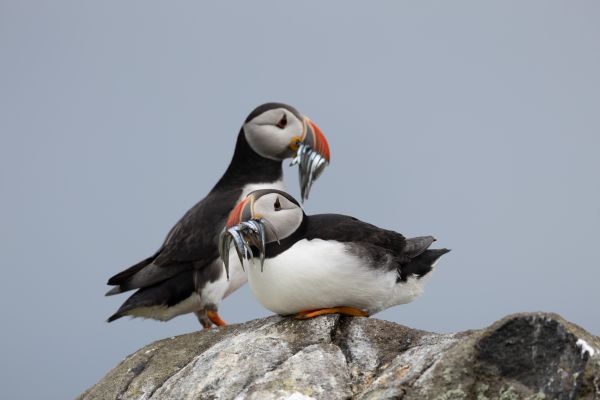
During this early part of the season, the Arctic begins its nearly endless days of sunlight. This extended daylight offers endless opportunities for exploration, photography, and wildlife sightings.
You may also encounter seals resting on the ice and perhaps even spot polar bears hunting along the ice edge. In Arctic tundra regions, vibrant wildflowers begin to bloom, adding bursts of color to the otherwise stark landscape. Walrus colonies start congregating along the ice floes, and whales can be seen navigating through newly opened waterways.
June to August is the height of summer in the Arctic. As temperatures rise and the ice continues to melt, wildlife becomes more active, making this a prime time for animal viewing. This is also the warmest time to visit the Arctic, with temperatures often hovering in the 40s or warmer in some areas. As the ice recedes, new waterways open, allowing for easier navigation by zodiacs and expedition vessels, granting access to remote areas that are otherwise inaccessible earlier in the season.
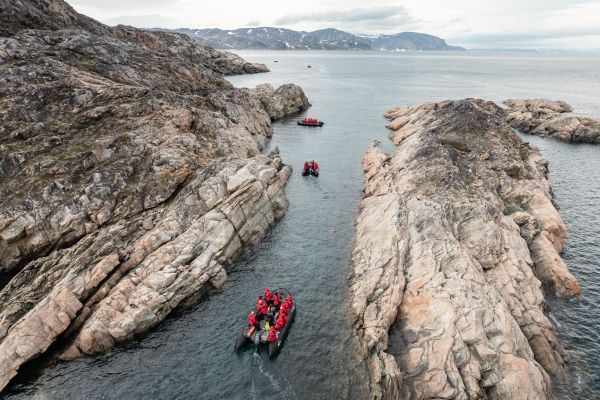
This is also the best time to observe seabird colonies at their busiest, with chicks hatching and adults feeding their young. Puffins, guillemots, and Arctic terns fill the skies and cliffs, creating an incredible spectacle.
In the Canadian Arctic and around Greenland, beluga pods (and if you are incredibly lucky narwhal pods) may be spotted navigating the fjords, while bowhead whales and minke whales make their way through open waters. For those hoping to witness Arctic foxes and reindeer, this is a great time as they become more active during the brief summer.
Late summer in the Arctic, from mid-August through September, offers breathtaking sunrises, vivid sunsets, and great whale watching! By this time, seabird colonies are buzzing with activity as chicks grow, molt, and prepare to take flight. While the cliffs and nesting areas may be less crowded, the surrounding landscapes remain striking, with snow-dusted mountain peaks and icy fjords reflecting the soft golden light of late summer. As autumn approaches, some seabird species, like Arctic terns, begin their long migration south, while others remain to fatten up before the harsh winter sets in.
Walrus haul-outs are also at their peak during this time, with large groups gathering along the shores of Svalbard and other Arctic regions. Polar bears remain active, often scavenging the last remnants of the ice before heading inland or farther north as winter approaches. Late summer also increases the chances of spotting humpback and fin whales feeding in nutrient-rich Arctic waters. In the Canadian High Arctic, you may be lucky enough to see large pods of beluga whales – it’s estimated that more than 50,000 belugas call Hudson Bay home.
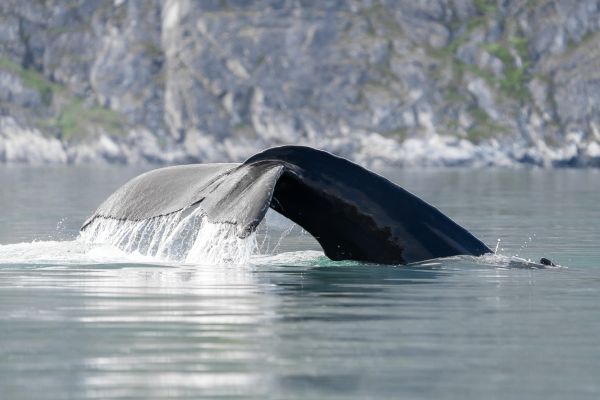
Considering the Longer Arctic Expedition
While most travelers think primarily of the archipelago of Svalbard for their trip to the Arctic, we highly recommend extending your expedition to include destinations like Greenland and the Canadian High Arctic. This makes for a longer but even more wildlife-rich adventure. Arctic itineraries typically range from 10 to 20 days for expedition cruises. Shorter trips usually focus on just one country within the Arctic circle.
Greenland is often called the “Arctic’s Crown Jewel,” offering stunning fjords, towering icebergs, and remote Inuit communities, something that the Arctic southern sister, Antarctica, doesn’t have. It’s home to an incredible variety of wildlife, including musk oxen, Arctic foxes, and even polar bears in some areas where they have not been hunted. Along the coast, you may also spot seals, walruses, and whales navigating the icy waters. The landscapes here are nothing short of breathtaking, with massive glaciers and vibrant tundra that changes color with the seasons.
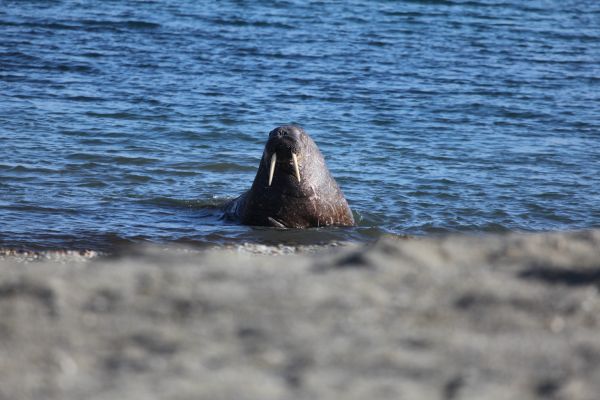
The Canadian High Arctic is equally spectacular, offering a glimpse into the rich history of Arctic exploration and Inuit culture. It’s a haven for Arctic wildlife, with opportunities to see large pods of beluga whales, herds of caribou, polar bears and perhaps even a narwhal for the lucky few!
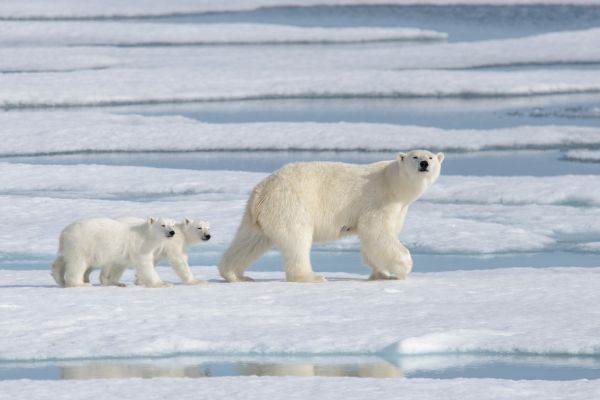
Activities in the Arctic
Almost every Arctic operator that Travel Beyond partners with offers zodiac excursions for up-close wildlife and landscape viewing, along with opportunities to explore various landing sites, take photos, and immerse yourself in the Arctic’s unique environment. Depending on the itinerary and time of year, some trips also offer hiking through tundra landscapes, kayaking through icy waters, and even polar plunges for the more adventurous! A few expeditions include options like photography workshops and visits to local Inuit communities to learn about Arctic life and culture. If any of these activities appeal to you, be sure to let your consultant know so we can match you with the best operator and vessel!
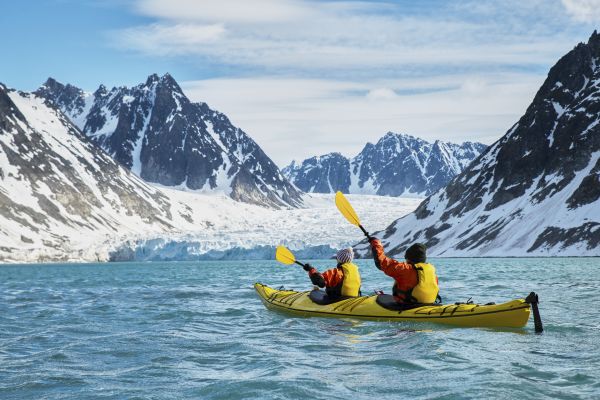
Vessel Size
Smaller expedition ships, usually with 100-150 passengers, offer more flexibility, allowing for more time spent on shore and closer wildlife encounters. Ships with around 200 passengers still provide an amazing experience with excursions sometimes running in rotations. For example, while Group A explores by zodiac, Group B may be on land observing wildlife or taking a guided hike – then the groups switch. This system is efficient and ensures that everyone has ample opportunity to explore. However, if you prefer more flexibility and want to maximize your time off the ship, a smaller vessel might be the ideal choice for your Arctic adventure.
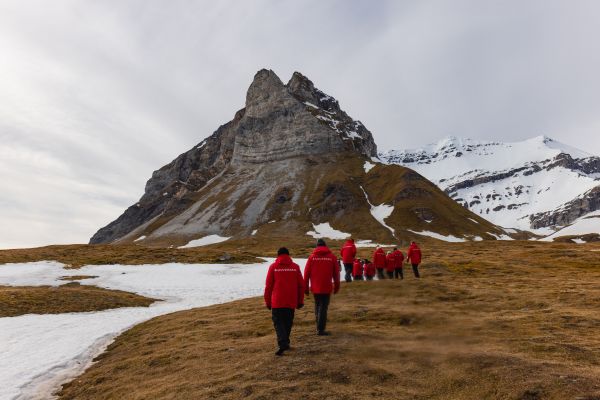
Book Early
We always recommend booking Arctic expeditions at least one year in advance, when possible. These cruises fill up quickly, especially during peak Arctic summer months, so booking early ensures you secure your preferred itinerary, vessel, and ideal travel dates. Occasionally, there may be last-minute availability, so it’s always worth checking if your plans are more flexible. However, if space is limited for short-notice trips, we can help secure future dates with your preferred operator and vessel to ensure you don’t miss out on this incredible experience.
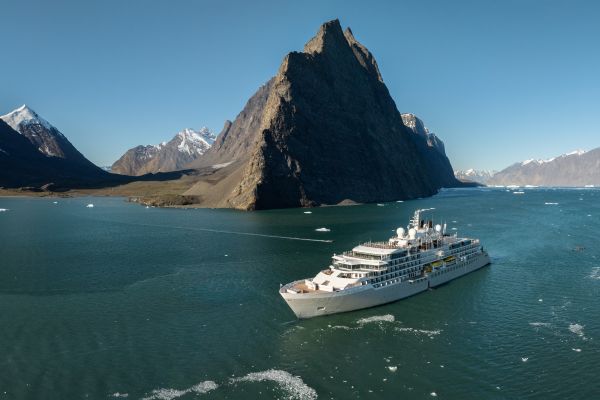
The Arctic is a breathtaking destination! We highly recommend it for adventurous travelers, wildlife enthusiasts, and those seeking to explore one of the most remote and awe-inspiring regions on Earth. Whether you’re drawn to the ice-covered landscapes, diverse wildlife, or the chance to witness the Midnight Sun, an Arctic journey promises an unforgettable adventure!
travelbeyond.com (Article Sourced Website)
#Arctic #Planning #Trip #Top #World #Travel
